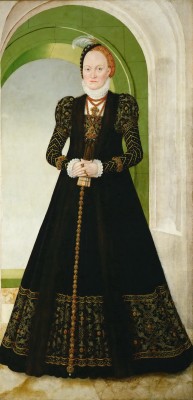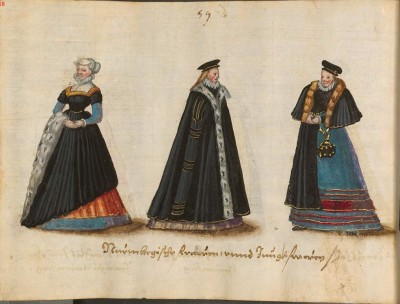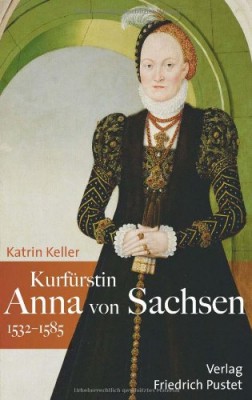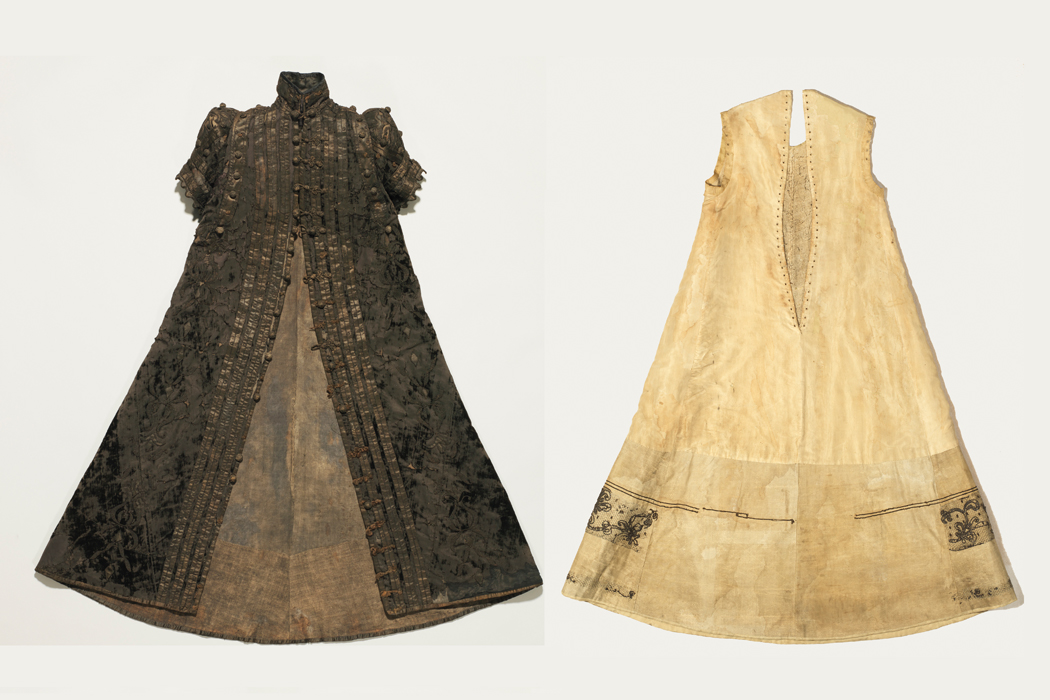In the 15th century it became fashionable to parade the pregnant body. A special type of garment was developed: The wide gown. In Nürnberg a unique example has been preserved
“Thus we pray once again and in a friendly manner that you will keep our usual German dress with the pleated gowns and caps and not dress in Italian dresses with smooth skirts and un-pleated gowns” (1570) (Quoted from: Katrin keller: Kurfürstin Anna von Sachsen. 1532-1585. Verlag Friedrich Pustet 2010, p. 48 ff.)
(From a letter written by Anna of Sachsen to her aunt, the Duchess Elisabeth von Mecklenburg-Güstrow, who is invited to the wedding of one of Anna’s daughters).

Anna of Sachsen was obviously keen to have her aunt dress properly and not in theItalien and – as she elsewhere called it – naughty fashion of the French. The question is however what the German fashion really looked like and how it differed from the Italien (and French). And why this question was of such importance? This was a time, when trade-relations crisscrossed an ever expanding world, bringing luxuries to every courtier and upstart trying to make a mark in his world; and where the fashioning of one self through the wearing of immensely costly clothes and accessories was high on the agenda of everyone. Furthermore, this was at a time, when a number of so-called “Costume Books” were published detailing the different costumes available throughout the known world (whether old or new). This was a time, when new and exotic fashions came and went. But apparently not for Anna.
A comparison of paintings and pictures from some of the Costume Books from the period give us an inkling about what was at stake. In the Italian fashion skirts got draped flat across a farthingale, while the German fashion demanded a well rounded and pleated skirt.
However, looking at German or Scandinavian portraits from the period most women look more or less pregnant. Records of the size of their coveys seem to demonstrate this quite clearly.

This was also the case for Anna. Inside 17 years she bore 15 children, of which only 4 outlived her. Probably physically worn out, she died at the age of 53. Compared to this, the fate of Anna of Bayern was less horrid; of six children, five survived her.
It seems obvious to link these huge numbers of children with one of the central tenets of the new protestant fait. Man was not destined to celibacy, but to marry and procreate. Anna and her husband were both staunch Protestants and endeavoured to live this new life to the full.
Thus we get these amusing differences between the pleated and obviously pregnant look of the German fashion and the narrow waistlines of the Spanish, Italian and French portraits, which advertised Catholicism and the endless rules prohibiting sex when feasting, fasting or just in general practising celibacy.
A current exhibition in Nürnberg – In Mode – is remarkable because one of the unique exhibits is the only gown preserved, which belongs to this group of long, loose gowns, which pregnant women in the 16th century were so fond of.
However, this precious object might have been constructed in the “Catholic Fashion” – long slim, and floating. We still lack a specimen of the pleated gowns, sported by Anna of Saxony.
SOURCE:
 Kurfürstin Anna von Sachsen
Kurfürstin Anna von Sachsen
By Katrin Keller
Verlag Friedrich Pustet
ISBN-10: 3791722700
ISBN-13: 978-3791722702
In Mode. Kleider und Bilder aus Renaissance und Frühbarock
By Jutta Zander-Seidel
Germanisches National Museum 2015
